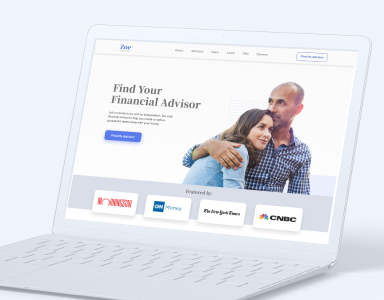articles
What Is Design Operations (DesignOps) And Why Is It Important For Your Business?

The demand for designers and design services has continued to spike during the last decade as companies like Accenture and Facebook have started to acquire design agencies. Design is no longer just an add-on to a business; it’s something that significantly impacts a company’s bottom line in the modern world.
Every time people are exposed to your business, your branding and design have a massive influence on their perception. This could be everywhere, from the ads you run on Facebook to the home page of your company’s website.
In this blog, we’ll learn about DesignOps, how it works, why it is important, who can benefit from DesignOps, and how you can leverage DesignOps to scale your business.
What is DesignOps?
To create great designs, design teams need to have all the right processes and tools in place. DesignOps, short for design operations, is an approach that allows designers to focus primarily on problem-solving. DesignOps has been adopted as both a methodology and a role within the design team to empower designers to create incredible designs at scale.
While the designers are mainly hired to create powerful designs for the company, often, they’re saddled with other demands that come with a corporate job, like endless meetings, planning new projects, reviewing projects, and more. Designers spend the majority of their day working on tasks that aren’t their core job responsibility.
This is where Design Operations (DesignOps) comes into the picture.
Operations are all the tasks that designers take up when they’re not designing, and DesignOps frees up designers from the operations tasks so they can spend time doing what they do best — design. DesignOps takes care of everything so the design team can simply get things done.
The term DesignOps was coined by Dave Malouf in 2014. Since then, DesignOps has become a popular approach for businesses that want to focus on scaling their design processes and systems. Companies like LinkedIn, Airbnb, Twitter, Dropbox, Fitbit, and Pinterest have dedicated DesignOps teams to ensure they create and deliver top-notch designs.
DesignOps helps design teams manage their design procedures, create effective feedback systems, build better coordination between teams to improve collaboration, manage design tools, and boost the culture of design within your organization.
DesignOps helps your company dial down the chaotic nature of this creative process and build a system that brings order and consistency into the picture.
The job of a DesignOps team or individual is to streamline project management from beginning to end and oversee every aspect of the project for timely delivery and high-quality work. They plan, define, and manage the entire design process and system within an organization.
The primary purpose of Design Ops is to amplify the value of the design practice. It focuses on the UI/UX design teams and helps them work and grow effectively by implementing the right tech stack, hiring the right people, setting up communication channels, streamlining workflows, providing them with the tools they need, and helping the company with overall management.
How does Design Operations (DesignOps) work?
There are three primary operational areas of focus when it comes to DesignOps:
1. People operations.
People Operations focus on improving how the designs work and collaborate within the company. It addresses the skills of the designers, helps build a robust design team, and even works to improve communication within the company. Onboarding new designers and ensuring they have everything they need to get started is another aspect that falls under people operations.
2. Business operations
Those in business operations ensure that designers have everything they need to keep delivering quality designs that align with the company’s goals. This includes securing the budget for the team, planning resources for the teams, and making sure they have the equipment, tools, and infrastructure to perform at their highest potential.
3. Workflow operations
Lastly, with workflow operations, it’s about streamlining the design workflow by setting up the project management software, building scalable systems and process guidelines, ensuring creative production workflow, and enabling the team to measure the impact of their design.
Each of these operational areas is weighed differently depending on the organization, project, or purpose of a design.
Importance of DesignOps
In a traditional product development pipeline, designers had to finish their tasks before the developers can proceed with their work. This inevitably stretched the timeline for completing a project. DesignOps empowers design and development teams to collaborate and work together to build iterative models to help them achieve their project goals.
Furthermore, designers also face a high volume of design tasks while attending endless meetings and being drowned in emails. The DesignOps methodology within the workforce eliminates these creative bottlenecks and mundane tasks designers have to deal with so they can focus on their core task, which is creating exceptional designs that align with their project goals.
DesignOps Challenges
Here are a handful of challenges that DesignOps helps companies overcome:
- Designers usually work in silos and are only brought in when there are designs to be created. Their detachment from strategy meetings and other meaningful user research discussions makes it challenging for them to do their best work.
- Some design teams may also lack access to the design and management tools necessary for them to work efficiently.
- Designers are often expected to have extremely fast turnovers, making it a primary factor of judgment for their efficiency. However, this often results in low-quality work and high-stress levels, which is often a sure-shot recipe for burnout.
DesignOps helps businesses understand how critical their designers’ innovation and creativity are for developing winning strategies. It helps them unlock their designers’ performance and sets them up for success.
The Role of DesignOps
The primary objective of DesignOps is to support design teams by providing them with the right tools and systems so they can do their best work. Here are the different aspects they work on to achieve this objective.
- Operations management. DesignOps ensure that designers aren’t working on unnecessary tasks like attending meetings or analyzing user research statistics that take their focus away from designing. They build a clear roadmap for different projects, determine the design team’s long-term goals, and help them plan how they can achieve these goals. They also help managers source the right talent by analyzing the skill gap within the organization.
- Process design. DesignOps build design processes and systems for design teams to follow to maximize collaboration and ensure everyone is on the same page at any given time.
- Project management. They design workflows, create processes and systems, set timelines and foresee the entire project from start to end.
- Creating a communication strategy. DesignOps set up the right communication channels and set standard communication guidelines that help design teams find the information they need at any given point in time. Furthermore, they act as the gatekeepers between the design team and the other departments and get involved in everyday creative workflows. It’s their responsibility to turn down tasks if the design team doesn’t have the capacity to take on new work or if the design briefs don’t have enough information.
- Onboarding new designers. They create internal guides and frameworks that help new designers get up to speed and join ongoing projects as soon as possible with everything they need to set them up for success.
- Culture of the design team. They organize training sessions and team-building activities for professional development and to boost the design team’s relationship with each other. They also offer physical and emotional support to their designers to help them work with a positive mindset.
- Budget allocation. DesignOps take responsibility for procuring the right budget for the design team after determining the cost of maintaining the team. Additionally, they allocate resources to different teams within the design department depending on their needs and requirements.
Final Thoughts
Businesses worldwide have realized the need to create great designs; however, not everyone understands the complexities and nuances of achieving them. With the increasing demand for design, businesses need to produce high-quality designs to keep pace with the demand of the market.
In this blog, we’ve discussed the fundamentals of DesignOps, why it’s important, and how you can leverage it to scale your organization.
Big brands like LinkedIn, Airbnb, and Dropbox have built in-house DesignOps teams to scale their design.
However, if you’re looking for a solution to immediately scale your designs without having to go through the slow and complicated process of implementing Design Ops in-house, then consider WANDR.
You can book a free consultation and get in touch with our experts at WANDR today!


.png)

